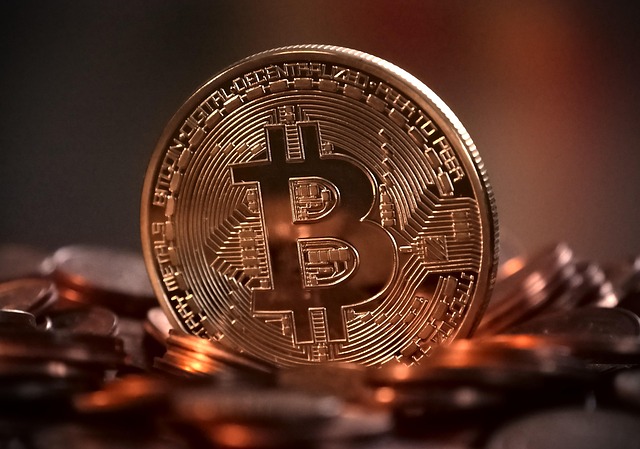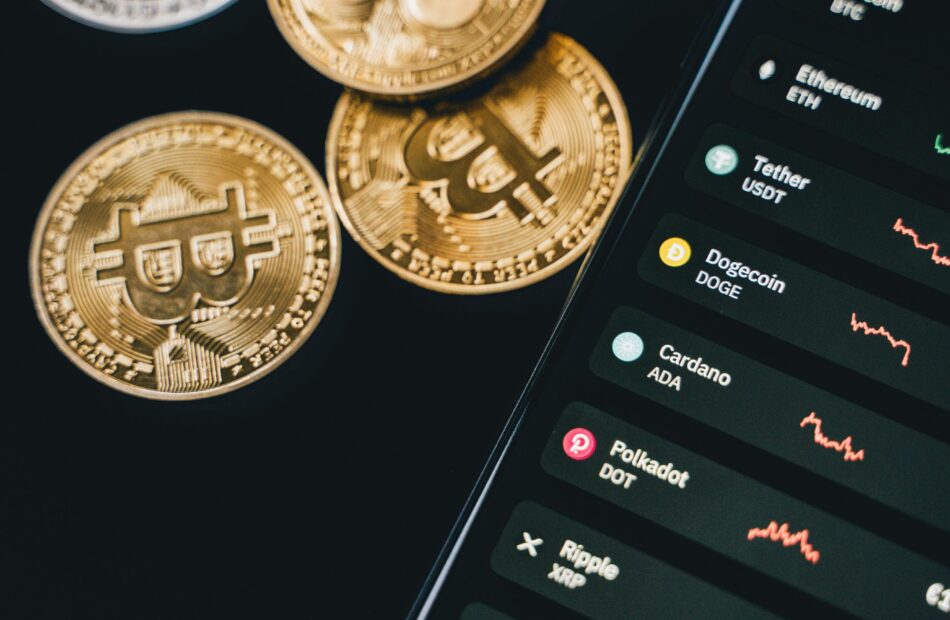Nasdaq files to list VanEck spot Avalanche ETF
American stock exchange Nasdaq has filed an application with the United States Securities and Exchange Commission (SEC) to list and trade shares of the VanEck Avalanche Trust, a proposed exchange-traded fund (ETF) designed to offer indirect exposure to the AVAX token.The filing, signed by Nasdaq’s executive vice president and chief legal officer John Zecca, requests approval to list and trade shares of the VanEck Avalanche ETF under the company’s Rule 5711(d), which governs the trading of commodity-based trust shares. If approved, the VanEck Avalanche ETF would allow investors to gain exposure to the Avalanche (AVAX) price without directly holding them. The ETF would hold the tokens and track their price, allowing investors to profit from the token’s performance without needing crypto wallets or using digital asset trading platforms. According to the filing, asset manager VanEck Digital Assets will sponsor the trust, while a third-party custodian will hold all the Avalanche tokens on the trust’s behalf. Excerpt of Nasdaq’s Avalanche ETF listing application. Source: NasdaqRelated: XRP ETF: Here are the funds awaiting SEC approval so farVanEck joins Avalanche ETF raceThe filing follows VanEck’s efforts to register a spot Avalanche ETF in the US. On March 10, the asset manager registered the crypto investment product as a trust corporate service company in Delaware. The application marks the fourth standalone crypto ETF product submitted by VanEck, alongside its Bitcoin (BTC), Ether (ETH) and Solana (SOL) ETF products. In 2024, VanEck filed for a spot Solana ETF, becoming one of the first issuers to file for a SOL-based ETF. On March 14, VanEck’s formal application for the Avalanche ETF was shared publicly via social media, signaling the firm’s commitment to the product.Grayscale Investments is also pursuing an AVAX-backed ETF. On March 28, Nasdaq applied to list Grayscale’s Avalanche ETF. The product would be a conversion of a close-ended AVAX fund launched by the asset manager in August 2024. Despite the interest in exchange-traded products based on AVAX, the token suffered massive losses in 2025 as the broader crypto markets saw a downturn. On April 10, the AVAX token traded at $18, which is 56% less than its January high of $41. Magazine: XRP win leaves Ripple and industry with no crypto legal precedent set
How USDT mints and burns move with Bitcoin price cycles
Over the past decade, issuance of Tether’s USDt (USDT) has consistently mirrored Bitcoin (BTC) price cycles, with mints often clustering around bull runs and burns following corrections.Data from Whale Alert shows the relation between USDT issuance and Bitcoin price movements by plotting Tether’s net minting and burning alongside the price of Bitcoin from 2015 to early 2025. While many in the industry have long speculated about the correlation between USDT supply and BTC performance, this data set provides a clearer timeline for evaluating that relationship.Tether’s USDT, the world’s largest stablecoin with over $144 billion in market capitalization, has become a key liquidity vehicle in crypto markets and is often viewed as a proxy for broader capital inflows. The data from Whale Alert reinforces how tightly its issuance patterns track with Bitcoin’s price cycles, though the direction of causality remains up for debate.Large issuances of USDT coincide with Bitcoin price spikes. Source: Whale AlertAccording to crypto analyst and researcher Mads Eberhardt, a greater supply of stablecoins — including Tether — has historically correlated with positive performance in crypto markets. This relationship is also evident when looking at Tether’s mint and burn chart over time.“However, it’s important to note that we have not observed this correlation over the past few months,” Eberhardt said. “I expect that as stablecoins see increasing adoption in non-native crypto use cases, this correlation will gradually weaken over time.”USDT issuance and Bitcoin price spikesWhale Alert’s data shows a consistent pattern of periods of aggressive USDT minting frequently coinciding with or closely preceding major Bitcoin bull runs. This was also apparent in late 2020 and throughout 2024 when net new USDT issuance climbed into the tens of billions as Bitcoin’s price accelerated upward.A series of large USDT mints in late October and November 2024 accompanied Bitcoin’s rise from $66,700 to over $106,000. Source: Whale AlertIn a more recent example, Bitcoin went on a bull run from $66,700 on Oct. 25, 2024, to over $106,000 on Dec. 16. The first significant mint in this cycle was a $1-billion issuance at the end of BTC’s trip to $72,000 on Oct. 30, before a short-lived correction. Bitcoin had another climb from $65,000 to $75,000, with another $6 billion minted at the end of this rally on Nov. 6. Bitcoin posted moderate gains over the next three days, during which Tether minted an additional $6 billion in two batches. This was followed by a sharp rally that pushed Bitcoin to $88,000.A mint of $6 billion on Nov. 18 marked the beginning of Bitcoin’s next leg up, kicking off a rally that pushed the price to just under $99,000 by Nov. 22. In the same stretch, Tether issued another $9 billion in three separate batches. Another mint of $7 billion on Nov. 23 came just before a brief pullback and Bitcoin’s ultimate surge to $106,000 by Dec. 17.The timing of USDT mints in late 2024 suggests that issuance can serve as a near-term signal of rising demand — but not necessarily as a pure leading indicator.With USDT now over a decade old since its 2014 launch, its role in Bitcoin price cycles is dwindling, Ki Young Ju, CEO of blockchain analytics firm CryptoQuant, told Cointelegraph.“Most of the new liquidity entering the Bitcoin market today is coming through MSTR and [exchange-traded funds], primarily via Coinbase’s BTC/USD market or [over-the-counter] desks. Stablecoins are no longer an important signal for determining Bitcoin’s market direction,” Ju said.“In fact, the total amount of stablecoins held on exchanges is lower than it was during the 2021 bull market,” he added.Total stablecoins held on exchanges today is lower than it was during the 2021 bull market. Source: CryptoQuantIn many of the observed cases, the largest mints occurred during or after price momentum was already underway. For example, the $6-billion mint on Nov. 6 came after Bitcoin had already rebounded from $65,000 to $75,000. Similarly, more than $15 billion in USDT was minted between Nov. 18 and 23 amid rapid upward price action rather than ahead of it.That said, there are several notable exceptions. A pair of mints totaling $7 billion around Nov. 13 and the $7 billion minted on Nov. 23 appeared shortly before fresh rallies, indicating that in some cases, large issuances may anticipate or help catalyze further price movement.“These days, most newly issued stablecoin liquidity is either for global trade settlements or represents profits from Bitcoin’s rise being converted into liquid form, which increases market cap — not necessarily fresh inflows,” Ju said.Related: Trump ‘Liberation Day’ tariffs create chaos in markets, recession concernsUSDT burns and lag behind Bitcoin correctionsConversely, periods of sustained USDT burns — when USDT is removed from circulation — often occur during or shortly after market corrections. This pattern suggests that redemptions tend to follow price pullbacks.This was visible in the weeks after Bitcoin’s December 2024 peak above $106,000. As BTC declined through January and into March 2025, several red bars — representing USDT burns — appeared on the chart.Dec. 26, 2024: A major USDT burn of $3.67 billion occurs just after Bitcoin drops from around $106,000 to $95,713.Dec. 30, 2025: A smaller burn of $2 billion follows as Bitcoin continues to decline toward the $92,000 level. Jan. 10, 2025: A $2.5-billion USDT mint occurs before Bitcoin rebounds to over $106,000.Feb. 28: Another $2 billion in USDT is burned following a month-long decline from Bitcoin’s six-digit peaks to around $84,000.Unlike mints, burns rarely precede downward moves in the same way that some mints appear in front-run rallies. Instead, they tend to confirm what’s already underway. This makes them useful for tracking post-peak behavior and assessing the scale of market cooling, rather than identifying tops in real time.Such patterns are observed throughout USDT’s existence, including a record-breaking $20-billion USDT burn on June 20, 2022, when Bitcoin tumbled from over $65,000 to around $21,000.However, experts agree that burns don’t offer definite post-peak signals: “Currently, we have no evidence of a correlation between burns and market tops, nor as a lagging indicator,” Jos Lazet, founder and CEO of asset management firm Blockrise, told Cointelegraph.Shifting stablecoin landscape impacting the USDT and Bitcoin relationshipWhile historical data shows a clear relationship between USDT supply changes and Bitcoin price movements, there are several factors that impact the price of Bitcoin, and the industry has yet to find concrete evidence that suggests USDT issuance directly influences the price of Bitcoin, or if they flow directly into Bitcoin.“It is not feasible to relate USDT supply (or minting) to a specific trading volume, as the majority of the trading against stablecoins happens on centralized exchanges, especially relating to Bitcoin,” Lazet said.“What can be easily seen is that the (far) majority of the trading volume relates to Bitcoin, and similarly the Bitcoin trading volume is largely done against USDT. However it (probably) won’t be feasible to directly correlate these events.”While the connection between USDT issuance and Bitcoin price action remains debated, external forces could soon reshape how stablecoins interact with crypto markets. The Markets in Crypto Assets (MiCA) framework places new compliance requirements on stablecoin issuers operating within the European Union. As a result, several exchanges have announced the delisting of USDT from their platforms. In the US, the proposed legislation could also reshape how centralized stablecoins like USDT are issued, backed and redeemed. Increased regulatory scrutiny may reduce the flexibility and responsiveness of issuers or prompt a shift toward more compliant alternatives.Related: Stablecoin adoption grows with new US bills, Japan’s open approachAt the same time, competition is intensifying. Rivals like USDC (USDC), with a strong compliance posture, are gaining ground, especially among institutions. USDC lost a chunk of its market cap in 2022 and 2023 following the Silicon Valley Bank debacle, dropping from around $56 billion to around $24 billion. Since then, it has recovered to an all-time high market capitalization of over $60 billion at time of writing.USDC market capitalization has recovered to an all-time high. Source: CoinGeckoMeanwhile, decentralized stablecoins such as Dai (DAI) are appealing to decentralized finance-native users who prioritize censorship resistance and onchain transparency.Tether’s influence on Bitcoin and the broader crypto market remains significant. But whether USDT mints and burns will continue to serve as reliable indicators of capital flow in the coming years will be influenced by how regulatory forces, user preferences and infrastructure developments reshape the stablecoin landscape.Magazine: New ‘MemeStrategy’ Bitcoin firm by 9GAG, jailed CEO’s $3.5M bonus: Asia Express
Magic Eden acquires crypto trading app Slingshot to move beyond NFTs
Solana non-fungible token (NFT) marketplace Magic Eden has acquired crypto trading app Slingshot as part of a strategy to expand beyond NFTs as other marketplaces fold amid a prolonged market downturn.The move expands Magic Eden’s support to more than 8 million tokens across almost every major blockchain, the firm said in an April 9 X post.“No bridges. No CEXs. This is another major step towards our vision of providing the best platform to trade all assets, on all chains,” Magic Eden said.Source: Jack LuSlingshot has amassed nearly 1 million users to date, allowing users to access any token on 10 of the largest blockchains with a universal USDC (USDC) balance.Slingshot is one of several crypto platforms aiming to deliver full-chain abstraction — eliminating the need for users to choose the right wallet, ensure they have enough gas fees, find a trusted bridge and move funds — only then to buy the token they’re after.Magic Eden CEO Jack Lu hopes the integration will help shift more of the 500 million users still relying on centralized exchanges toward more crypto-native, onchain platforms.NFT marketplaces shutter as market lullsLu said that Magic Eden and Slingshot and Magic Eden will continue to operate independently but noted there will be “increasing connectivity” between the platforms over time.Lu also noted that Magic Eden made $75 million from its NFT marketplace in 2024 and hopes the Slingshot acquisition will help drive those numbers up even higher.Related: Bitcoin NFTs, layer-2 and restaking hype ‘completely gone’Magic Eden’s expansion comes as several NFT marketplaces have shuttered in recent months.DraftKings, GameStop and the crypto exchange Bybit all closed their NFT marketplaces, with Bybit citing falling NFT trading volumes in its April 8 announcement.X2Y2 also recently announced that its NFT marketplace would shut down on April 30 as the firm looks to pivot into artificial intelligence.NFT marketplaces have seen $1.6 billion worth of NFT sales across 14 million transactions so far in 2025, CryptoSlam data shows.However, monthly sales volume has fallen every single month in 2025, and the $1.6 billion is nowhere near on track to match the $8.9 billion total from 2024, let alone the record $23.7 billion seen in 2022.Magazine: Memecoins are ded — But Solana ‘100x better’ despite revenue plunge
Bitcoin inflows to Binance see ‘strong acceleration’ ahead of March CPI print
Bitcoin inflows into crypto exchange Binance have surged over the past two weeks amid uncertainty over US President Donald Trump’s tariffs and the upcoming US Consumer Price Index (CPI) results, says an analyst.However, another analyst argued that while it could signal an impending sell-off, it might also indicate a bullish trend.Investors are “actively moving funds to Binance”CryptoQuant contributor Maarten Regterschot said in an April 9 post that Binance’s Bitcoin (BTC) reserve increased by 22,106 BTC, worth $1.82 billion, over the last 12 days to a total of 590,874 BTC.“This shows a strong acceleration in BTC inflows to Binance. It’s likely that investors are actively moving funds to Binance due to the macro uncertainty and before the upcoming CPI announcement,” Regterschot said. CoinMarketCap shows Bitcoin is trading at $82,474 at the time of publication, up 8.8% in the past day after receiving a boost from Trump’s 90-day tariff pause on all countries but China.Binance’s Bitcoin Reserve has 590,874 Bitcoin. Source: CryptoQuantThe US Bureau of Labor Statistics is scheduled to deliver the CPI results for March on April 10.During uncertain times, traders often move their crypto onto exchanges to sell, leading to more volatility as confidence starts to decline.However, Swyftx lead analyst Pav Hundal told Cointelegraph that this isn’t always a bearish signal. “Large inflows could be a sign of selling, but it is a very fluid market. It is plausible that Binance is shifting assets into its hot wallets to meet heavy demand.”“The next few days are critical in understanding the appetite of the market for crypto after Trump’s climbdown on tariffs,” he said.Earlier on April 9, Trump issued a 90-day pause on his administration’s “reciprocal tariffs,” lowering the tariff rate to 10% on all countries besides China, which he ramped up to 125%, citing the country’s counter-tariffs against the US.“Tensions between the US and China remain a structural overhang,” Hundal said. Related: Bitcoin price at risk of new 5-month low near $71K if tariff war and stock market tumult continuesMeanwhile, crypto analyst Matthew Hyland said that the March CPI results “will show inflation is crashing down probably close to 2.5%.”“Another interesting day coming,” he added. Crypto analyst Dyme said, “Lower than expected CPI print will send us higher.”However, FactSet’s consensus estimates show economists expect consumer prices to have risen by 0.1% month-over-month in March. On March 12, the CPI came in lower than expected at 3.1%, beating expectations of 3.2%, with a corresponding 0.1% drop in headline inflation figures.Magazine: Memecoin degeneracy is funding groundbreaking anti-aging researchThis article does not contain investment advice or recommendations. Every investment and trading move involves risk, and readers should conduct their own research when making a decision.
SEC approves options on spot Ether ETFs
The United States Securities and Exchange Commission (SEC) has approved options trading for multiple spot Ether exchange-traded funds (ETFs), a move that may broaden the investment appeal of Ether among institutional traders. The SEC issued the approval on April 9 after reviewing a proposed rule change submitted by BlackRock for its iShares Ethereum Trust (ETHA) on July 22, 2024. Similar approvals were granted to Bitwise Ethereum ETF (ETHW), Grayscale Ethereum Trust (ETHE), and Grayscale Ethereum Mini Trust (ETH), as well as Fidelity Ethereum Fund (FETH).“[T]he Exchange proposes to amend its rules to permit the listing and trading of options on the Trust,” the SEC said in its response to the Nasdaq, adding:The Exchange states that options on the Trust will provide investors with an additional, relatively lower cost investing tool to gain exposure to spot ether as well as a hedging vehicle to meet their needs in connection with ether products and positions.The SEC’s approval of options trading on the iShares Ethereum Trust. Source: SECOptions on ETFs are a portfolio tool that gives investors the ability to hedge against a decline in assets. The strategy’s inclusion is seen as an important step in broadening Ether’s (ETH) investment appeal after regulators approved the spot Ethereum ETFs last July. So far, net inflows into the spot Ether funds have been fairly muted, with most of the institutional interest flooding into Bitcoin (BTC) funds. BlackRock’s ETHA currently has $1.8 billion in net assets, down 56% since the start of the year, according to VettaFi.Related: Ethereum price falls to 2-year low, but pro traders still have hopeShifting regulatory tidesSince the election of US President Donald Trump, the SEC has signaled its readiness to scale back its enforcement initiatives against the crypto industry. Although this was expected, legal experts with the Harvard Law School Forum on Corporate Governance were surprised by “how quickly the shifting priorities would come to fruition” since Trump took office.As Cointelegraph recently reported, the securities regulator has closed its investigations into various crypto companies, including exchanges Gemini and Coinbase, decentralized exchange developer Uniswap Labs, and NFT marketplace OpenSea. On the legislative side, regulators are moving quickly to pass pro-stablecoin legislation. The House Financial Services Committee recently advanced the STABLE Act, which is meant to enshrine the use of stablecoins in the United States, and the Senate Banking Committee pushed through the GENIUS Act, which aims to regulate stablecoin issuers. Lawmakers have also tipped plans to advance a comprehensive crypto market structure bill, which is expected to be finalized this year. Related: No crypto project has registered with the SEC and ‘lived to tell the tale’ — House committee hearing
XRP price gains 13% after Trump 90-day tariff pause and XXRP ETF launch
XRP (XRP) price is up 13% on the day, trading above the $2 level after President Donald Trump announced a 90-day pause on all reciprocal tariffs, except for China, which saw an additional 125% hike in response to their counter-tariffs against the US. XRP’s rally comes on the heels of additional positive news and the XXRP ETF being launched on the New York Stock Exchange (NYSE) Arca. Despite the positive macroeconomic and TradFi crypto adoption news, XRP charts still caution that a sharp price downside could lie ahead. Descending triangle pattern hints at a 33% dropSince December 2024, XRP price has been forming a potential triangle pattern on its daily chart, characterized by a flat support level mixed with a downward-sloping resistance line.A descending triangle chart pattern that forms after a strong uptrend is seen as a bearish reversal indicator. As a rule, the setup resolves when the price breaks below the flat support level and falls by as much as the triangle’s maximum height.The price dropped below the triangle’s support line at $2 on April 6, confirming a potential breakdown move. In this case, the price may fall toward the downside target at around $1.20 by the end of April, down 33% from current price levels.XRP/USD daily chart. Source: Cointelegraph/TradingViewXRP’s descending triangle target echoes trader CasiTrade’s prediction that the altcoin could drop as low as $1.55 due to a “textbook” Elliott Wave Theory analysis.“Right now, $1.81 is a critical level to break in this plan,” the trader said in an April 8 post on X, adding that if the price loses that level, it would confirm a deeper move.According to CasiTrades, the next level to watch would be $1.71, where the price would pause temporarily before the “projected final low” at $1.55.“Key zone: $1.55 is the golden retracement and the likely end to this entire corrective W2.”XRP/USD 15-minute chart. Source: CasiTradesThe bearish outlook mirrored veteran trader Peter Brandt’s prediction that XRP price could decline to $1.07 due to a “textbook” head-and-shoulders pattern forming on the daily chart.Related: Ripple acquisition of Hidden Road a ‘defining moment’ for XRPL — Ripple CTOCould XXRP ETF launch avert an XRP price sell-off?Despite the launch of the XXRP ETF on NYSE Arca on April 8, 2025, XRP’s price remains precarious due to a mix of market dynamics and escalating trade wars. The 2x leveraged ETF, designed to amplify XRP’s daily returns, debuted amid heightened volatility, with XRP trading at around $1.71 after a 7.4% drop in 24 hours. The XXRP ETF attracted $5 million in first-day volume, in what Bloomberg ETF analyst Eric Balchunas termed a commendable achievement considering the ongoing tumult in crypto and other global markets. Although this was 200x less than the volume posted by BlackRock’s IBIT ETF on day one, this performance puts XXRP in the top 5% of new ETF launches.Source: Eric BalchunasBeyond the XXRP ETF, macroeconomic factors, notably US President Donald Trump’s reciprocal tariffs, take center stage this week, threatening further volatility across crypto markets. This article does not contain investment advice or recommendations. Every investment and trading move involves risk, and readers should conduct their own research when making a decision.
Price analysis 4/9: BTC, ETH, XRP, BNB, SOL, DOGE, ADA, LEO, LINK, TON
Risky assets remain volatile as trade war tension between the United States and China keeps investors on the edge. A minor positive is that Bitcoin (BTC) has avoided a sharp fall and is trading well above the crucial near-term support at $73,777. BitMEX co-founder Arthur Hayes said in a post on X that the PBOC (People’s Bank of China) could give the catalyst needed for the next leg of the crypto bull run by weakening the yuan. Such a move led to Chinese capital flight into Bitcoin in 2013 and 2015, and it could work again in 2025.Crypto market data daily view. Source: Coin360The situation remains fluid and difficult to predict. Therefore, investors seem to be curtailing risk, as seen from the $595.9 million in outflows from the US-listed spot Bitcoin exchange-traded funds in the past four trading days, per Farside Investors data.Could Bitcoin hold above the $73,777 support, or will the bears pull the price below it? How are the altcoins positioned? Let’s analyze the charts of the top 10 cryptocurrencies to find out.Bitcoin price analysisBitcoin tried to start a recovery on April 8 but met with strong selling near the 20-day exponential moving average ($82,218). That suggests the sentiment remains negative, and traders are selling on rallies.BTC/USDT daily chart. Source: Cointelegraph/TradingViewThe downsloping moving averages indicate an advantage to bears, but the positive divergence on the relative strength index (RSI) suggests the bearish momentum could be slowing down. However, if the $73,777 level cracks, the BTC/USDT pair could swiftly nosedive to the next support at $67,000. Solid buying is likely to emerge in the $67,000 to $65,000 support zone.The 50-day simple moving average ($85,703) remains the key overhead resistance to watch out for. Buyers will have to drive the price above the 50-day SMA to suggest that the corrective phase may have ended. Until then, rallies are likely to be sold into.Ether price analysisEther (ETH) has been in a strong downtrend, but the price has reached the $1,368 support, which could start a relief rally.ETH/USDT daily chart. Source: Cointelegraph/TradingViewThe ETH/USDT pair could rise to the 20-day EMA ($1,786), which is likely to act as a stiff hurdle. If the price turns down from the 20-day EMA, the bears will try to sink the pair below $1,368. If they can pull it off, the pair may collapse to $1,150.Instead, if the price turns down from the 20-day EMA but rebounds off $1,368, it will signal a range formation in the near term. A break and close above the 20-day EMA suggests the bears are losing their grip. The pair may then ascend to the breakdown level of $2,111.XRP price analysisXRP (XRP) tried to rise above the breakdown level of $2 on April 8, but the bears held their ground. That suggests the bears are trying to flip the level into resistance.XRP/USDT daily chart. Source: Cointelegraph/TradingViewIf the price turns down and breaks below $1.61, the XRP/USDT pair could resume the downtrend. The next support on the downside is at $1.27.Conversely, if buyers drive the price above the 20-day EMA ($2.10), it suggests solid demand at lower levels. There is a minor hurdle at the 50-day SMA, but it is likely to be crossed. If that happens, the pair could rally to the resistance line, where the bears are expected to sell aggressively.BNB price analysisBNB (BNB) is trying to form a higher low at $520, indicating solid buying by the bulls at lower levels.BNB/USDT daily chart. Source: Cointelegraph/TradingViewThe bulls will try to push the price toward the downtrend line, which is expected to act as a solid barrier. If the price returns from the downtrend line, it will indicate that the bears are active at higher levels. The BNB/USDT pair may oscillate inside the triangle for a while.The support line is the crucial level to watch out for on the downside. A break and close below the support line could open the doors for a fall to $460. Buyers are expected to defend the $460 level with all their might because a break below it may sink the pair to $400.Solana price analysisSolana (SOL) has been trading below the $110 support, but the bears have failed to start a downward move. That suggests a lack of aggressive selling at lower levels.SOL/USDT daily chart. Source: Cointelegraph/TradingViewBuyers are expected to face stiff resistance in the $110 to $120 zone. If the price turns down from the overhead zone, it will signal that the bears remain sellers on rallies. That heightens the risk of a break below $95. The SOL/USDT pair may then tumble to $80.Alternatively, a break and close above $120 suggests that the markets have rejected the breakdown below $110. The 50-day SMA ($135) may act as a resistance, but it is likely to be crossed. The pair could rise to $147 and, after that, to $180.Dogecoin price analysisDogecoin (DOGE) is witnessing a tough battle between the bulls and the bears near the $0.14 support.DOGE/USDT daily chart. Source: Cointelegraph/TradingViewThe downsloping moving averages indicate advantage to bears, but the positive divergence on the RSI suggests the selling pressure is reducing. However, if the price dips and maintains below $0.14, the selling could pick up again. The next stop on the downside is at $0.10.Contrarily, a break and close above the $0.20 resistance signals the formation of a double bottom pattern. The DOGE/USDT pair could rally to $0.24 and later to the pattern target of $0.26.Cardano price analysisBuyers are trying to keep Cardano (ADA) above the $0.50 support but are expected to face selling on every minor rally.ADA/USDT daily chart. Source: Cointelegraph/TradingViewIf the price turns down from the 20-day EMA ($0.65), it increases the risk of a break below $0.50. The ADA/USDT pair could then drop to $0.45 and subsequently to $0.40. Buyers are expected to fiercely defend the $0.30 to $0.40 support zone.The first sign of strength will be a break and close above the 20-day EMA. If that happens, the pair may climb to the 50-day SMA ($0.72). This is an important level for the bears to defend because a break above it signals a short-term trend change.Related: Bitcoin price at risk of new 5-month low near $71K if tariff war and stock market tumult continuesUNUS SED LEO price analysisUNUS SED LEO (LEO) has started a recovery, which is expected to face selling at the 20-day EMA ($9.36).LEO/USD daily chart. Source: Cointelegraph/TradingViewIf the price turns down from the 20-day EMA, it will signal that the sentiment has turned negative and traders are selling on rallies. That increases the risk of a break below the $8.80 support. If that happens, the LEO/USD pair could drop to $8.30.Contrary to this assumption, if the price rises and maintains above the 20-day EMA, it indicates solid buying at lower levels. The bulls will then attempt to push the price to the overhead resistance at $9.90.Chainlink price analysisChainlink (LINK) has dropped to the support line of the descending channel pattern, where buyers are expected to step in.LINK/USDT daily chart. Source: Cointelegraph/TradingViewThe rebound off the support line is expected to face strong selling at the moving averages. If the price turns down sharply from the moving averages, the LINK/USDT pair could break below the support line. The next support on the downside is at $8.Buyers have an uphill task ahead of them. They will have to push and maintain the price above the 50-day SMA ($14.50) to suggest that the bearish momentum has weakened. The pair may then rise to the resistance line.Toncoin price analysisToncoin (TON) is finding support at $2.84, but the failure to start a strong rebound suggests a lack of demand from the bulls.TON/USDT daily chart. Source: Cointelegraph/TradingViewThe 20-day EMA ($3.41) is sloping down, and the RSI is in negative territory, indicating that bears have the edge. If the price dips below $2.84, the TON/USDT pair could plunge to $2.35.If buyers want to prevent the downside, they will have to drive and maintain the price above the moving averages. That could open the doors for a rally to $4.14, where the bears are expected to mount a strong defense.This article does not contain investment advice or recommendations. Every investment and trading move involves risk, and readers should conduct their own research when making a decision.
Kalshi accepts Bitcoin deposits in bid to woo crypto-native users
Prediction marketplace Kalshi has started taking Bitcoin (BTC) deposits in a bid to onboard more crypto-native users.The company that lets users bet on events ranging from election outcomes to Rotten Tomatoes film ratings has seen a strong uptake among crypto traders, Kalshi told Cointelegraph on April 9. For instance, event contracts for betting on Bitcoin’s hour-by-hour price changes have seen $143 million in trading volume to date, a spokesperson said.Kalshi is a derivatives exchange regulated by the US Commodity Futures Trading Commission (CFTC). As of April 9, it listed some 50 crypto-related event contracts, including markets for betting on coins’ 2025 highs and lows, as well as on headlines such as US President Donald Trump’s proposed National Bitcoin Reserve. Kalshi has doubled down on crypto event contract markets. Source: KalshiThe platform started accepting crypto payments in October when it enabled stablecoin USD Coin (USDC) deposits. Kalshi relies on ZeroHash — a crypto payments infrastructure provider — for off-ramping BTC and USDC and converting the deposits to US dollars. The exchange accepts BTC deposits only from the Bitcoin network. Most Kalshi traders no longer expect core tokens to earn positive returns this year. Source: KalshiRelated: Kalshi traders place the odds of US recession in 2025 at over 61%More accurate than pollsLaunched in 2021, Kalshi rose to prominence ahead of the US’s November elections. It became a top venue for trading on 2024 political events after winning a lawsuit against the CFTC, which tried to block Kalshi from listing contracts tied to elections. The regulator argued that political prediction markets threaten the integrity of elections, but industry analysts say they often capture public sentiment more accurately than polls. For instance, prediction markets, including Kalshi, accurately predicted Trump’s presidential election win even as polls indicated a tossup.“Event contract markets are a valuable public good for which there is no evidence of significant manipulation or widespread use for any nefarious purposes that the Commission alleges,” Harry Crane, a statistics professor at Rutgers University, said in an August comment letter filed with the CFTC.As of April 9, Kalshi traders peg the odds of the US entering a recession at 68%, according to its website. In March, Kalshi partnered with Robinhood to bring prediction markets to the popular online brokerage platform. Robinhood’s stock rose some 8% on the news. Kalshi competes with Polymarket, a Web3-based prediction platform. Polymarket processed more than $3 billion in trading volumes tied to the US presidential election despite being off-limits for US traders.Magazine: Bitcoin heading to $70K soon? Crypto baller funds SpaceX flight: Hodler’s Digest, March 30 – April 5
DeFi security and compliance must be improved to attract institutions
Opinion by: Sergej Kunz, co-founder of 1inchInstitutional players have been closely watching decentralized finance’s growth. Creating secure and compliant DeFi platforms is the only solution to build trust and attract more institutions.Clear waters attract big shipsOver the past four years, institutional DeFi adoption has gone from 10% of hedge funds to 47%, and is projected to rise to 65% in 2025. Goldman Sachs is reaching their arms to DeFi for bond issuance and yield farming. Early adopters are already positioning themselves in onchain finance, including Visa, which has processed over $1 billion in crypto transactions since 2021 and is now testing cross-border payments. In the next two years, institutional adoption will speed up. A compliant regulatory framework that maintains DeFi’s core benefits is necessary for institutional adoption to engage confidently. DeFi’s institutional trilemmaIt is no secret that many DeFi security exploits happen every year. The recent Bybit hack reported a $1.4 billion loss. The breach occurred through a transfer process that was vulnerable to attack. Attacks like these raise concerns about multisignature wallets and blind signing. This happens when users approve transactions without full details, rendering blind signing a significant risk. This case calls for stronger security measures and improvements in user experience.The threats of theft due to vulnerabilities in smart contracts or mistakes by validators make institutional investors hesitate when depositing large amounts of money into institutional staking pools. Institutions are also at risk of noncompliance due to a lack of clear regulatory frameworks, creating hesitation to enter the space. The user interface in DeFi is often designed for users with technical expertise. Institutional investors require user-friendly experiences that make DeFi staking possible without relying on third-party intermediaries.Build it right, and they will comeInstitutional interest in bringing traditional assets onchain is enormous, with the tokenized asset market estimated to reach $16 trillion by 2030. To confidently participate in DeFi, institutions need verifiable counterparties that are compliant with regulatory requirements. The entry of traditional institutional players into DeFi has led some privacy advocates to point out that it can counter the essence of decentralization, which forms the bedrock of the ecosystem.Recent: Securitize to bring BUIDL tokenized fund to DeFi with RedStone price feedsInstitutions must be able to trust DeFi platforms to maintain compliance standards while providing a safe and seamless user interface. A balanced approach is key. DeFi’s permissionless nature can be achieved while maintaining compliance through identity profiles, allowing secure transactions. Similarly, transaction screening tools facilitate real-time monitoring and risk assessment. Blockchain analytics tools help institutions to maintain compliance with Anti-Money Laundering regulations and prevent interaction with blacklisted wallets. Integrating these tools can help detect and prevent illicit activity, making DeFi safer for institutional engagement.Intent-based architecture can improve securityThe relationship between intent-based architecture and security is evident; the very design is built to reduce risks, creating a more reliable user experience. This protects the user against MEV exploits, a common issue of automated bots scanning for large profitable trades that can be exploited. Intent-based architecture also helps implement compliance frameworks. For instance, restricting order submissions to clean wallets and allowing resolvers to settle only the acceptable orders.It’s well understood that in traditional DeFi transactions, users rely often on intermediaries like liquidity providers to execute trades or manage funds. This leads to counterparty risk, unauthorized execution and settlement failure. The intent-based architecture supports a trustless settlement that ensures users commit only when all conditions are met, reducing risk and removing blind trust from the picture.DeFi platforms must simplify interactions and UX for institutional investors. This system bridges the gap between. Through executing offchain while ensuring security, the intent-based architecture makes DeFi safer and more efficient. However, one of the challenges to this includes integrating offchain order matching while maintaining onchain transparency.Late adopters of DeFi will struggle to keep upFor the early adopters of DeFi, there is a competitive advantage in liquidity access and yield advantages, whereas late adopters will face more regulatory scrutiny and entry barriers. By 2026, the institutional players that have failed to adopt DeFi may struggle to keep up. This is seen in the examples of early adopters like JPMorgan and Citi’s early tokenization projects. TradFi leaders like them are already gearing up for onchain finance.The way forwardRegulatory bodies, supervisory agencies and policy leaders must provide clear, standardized guidelines to facilitate broader institutional participation. Uniform protocols underpinning wider institutional involvement are underway. DeFi platforms must be prepared beforehand to provide all the necessary pillars of compliance and security to institutional players who want to embrace mainstream adoption. Executing this shall require combined efforts from regulators, developers and institutions.Opinion by: Sergej Kunz, co-founder of 1inch. This article is for general information purposes and is not intended to be and should not be taken as legal or investment advice. The views, thoughts, and opinions expressed here are the author’s alone and do not necessarily reflect or represent the views and opinions of Cointelegraph.
Argentine lawmakers back Milei probe in Libra crypto scandal
Lawmakers in Argentina’s Chamber of Deputies backed an investigation into President Javier Milei’s alleged involvement in the Libra (LIBRA) cryptocurrency scandal.According to an April 8 report by local news outlet Buenos Aires Times, deputies in the lower house voted 128 to 93 in favor, with seven abstentions. The same proposal previously failed to move forward in the Senate.The news follows Milei promoting the LIBRA memecoin on social media. With the Argentine president leveraging his credibility as a government official and his 3.8 million followers, the token quickly reached $5, briefly touching a market cap of $4 billion.Milei has since faced accusations of wrongdoing, with critics claiming that LIBRA was a rug-pull scam and that he lured investors in. Lawyer Jonatan Baldiviezo, alongside Marcos Zelaya, engineer María Eva Koutsovitis and economist Claudio Lozano, a former head of Argentina’s central bank, filed a lawsuit against Milei, accusing him of fraud.Related: KIP Protocol reveals involvement in Javier Milei-endorsed Libra rug pullA presidential-scale disasterAccording to Baldiviezo, Milei’s promotion was instrumental in an “illicit association” with the promoters of the cryptocurrency. The non-governmental organization Observatorio del Derecho a la Ciudad shared the concerns and filed a case that accused the president of promoting a scheme that reportedly resulted in over 40,000 investors losing more than $4 billion. February onchain data showed that the hardest hit investors of the LIBRA memecoin pump and dump scheme lost a combined $251 million. Blockchain data shows that of the 15,430 wallets that sold at a profit or loss of more than $1,000, over 86% of those sold at a loss, resulting in a total of $251 million lost.Despite numerous sources showing his social media posts, in mid-February, Milei denied claims that he promoted LIBRA. He said at the time:“I did not promote that. What I did, I spread the word.”Related: Javier Milei risks impeachment after endorsing $107M Libra rug pullA reported family businessOne of the creators behind the controversial Libra crypto token reportedly sent a text message bragging about being able to pay Argentine President Javier Milei’s sister in exchange for the president sharing the memecoin’s details on social media. According to February reports, Hayden Davis — a person connected to the project — sent a message to a crypto investment firm executive saying that he could pay Karina Milei for “control” over the Argentine president:“We can also have Milei tweet and meet in person and do promo. […] I send $$ to his sister and he does whatever I say and does what I want.”Magazine: Memecoins are ded — But Solana ‘100x better’ despite revenue plunge









